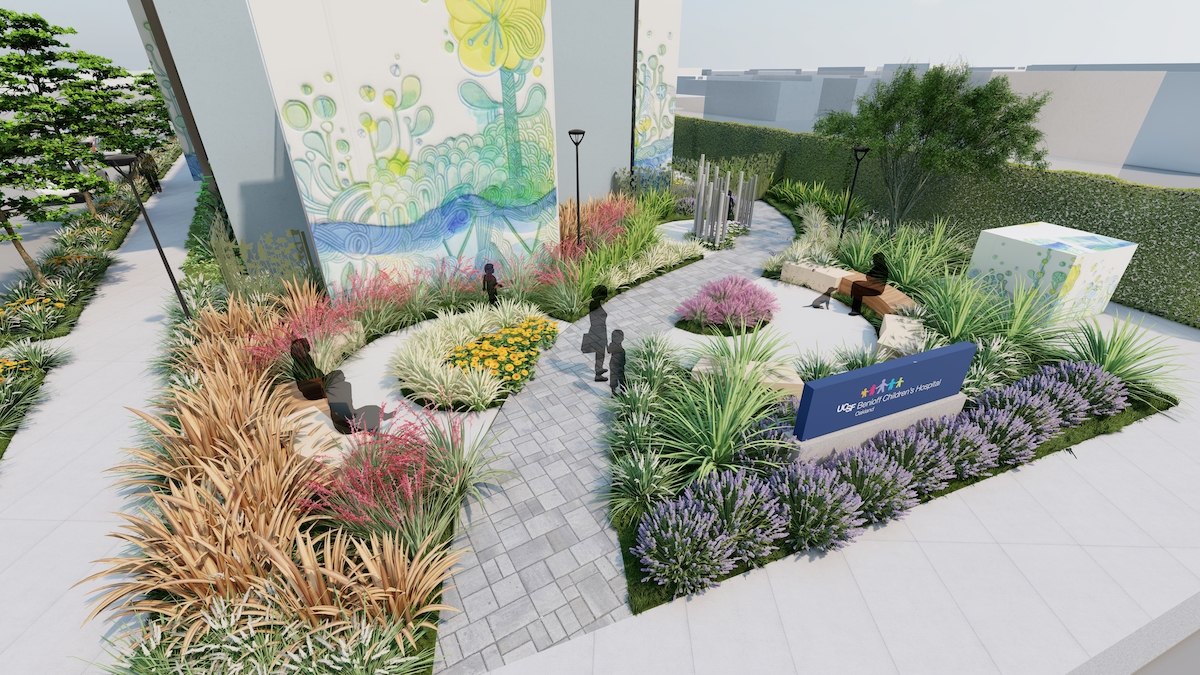In today’s healthcare landscape, the optimal medical office goes beyond a surface-level focus on wellness to intentionally supporting emotional well-being and the whole patient. The current mental health crisis impacting patients has influenced the kind of care our communities are seeking out, while exasperating the burden on the medical staff supporting them.
Medical spaces need to be thoughtful of everyone who enters the doors, from the patients and their families to the practitioners and staff who serve them. Truly supporting this community requires that medical offices simultaneously make people feel welcome, reduce anxiety, and engender empathy.
To do this, there are five critical categories to prioritize during the design phase of new and remodeled medical offices: privacy, separate areas for practitioners, natural light, outdoor spaces, and thoughtful selection of materials.
1. DESIGN FOR PATIENT PRIVACY
Every patient is entitled to privacy, but not everyone is comfortable coming into the office to get the support they need. Medical offices can dramatically improve the comfort level of this highly sensitive patient population by creating opportunities for more discretion from the moment they arrive until they leave.
This could begin with a separate entrance from the front door – like a secondary entry with dedicated welcome staff for specific patient populations. Once they are inside these patients can still be intimidated by activity at the front desk and waiting room.
Are you a healthcare design or construction professional? If so, we invite you to take BD+C's 2024 Outpatient Facilities survey.
The waiting room experience can be improved by allowing more distance between groupings of chairs to provide a buffer between patients. High-back lounges that provide a level of visual screening can also help. Carving out distinct areas for children and families, settings suited for quiet conversation, and alcoves with acoustic privacy for quiet reflection can also enhance a feeling of privacy.
Acoustic consultants can be valuable partners in the design of clinical spaces at the front end of the project, but it’s critical to bring them in at the end of construction as well to test the spaces and make any adjustments to meet your standards.
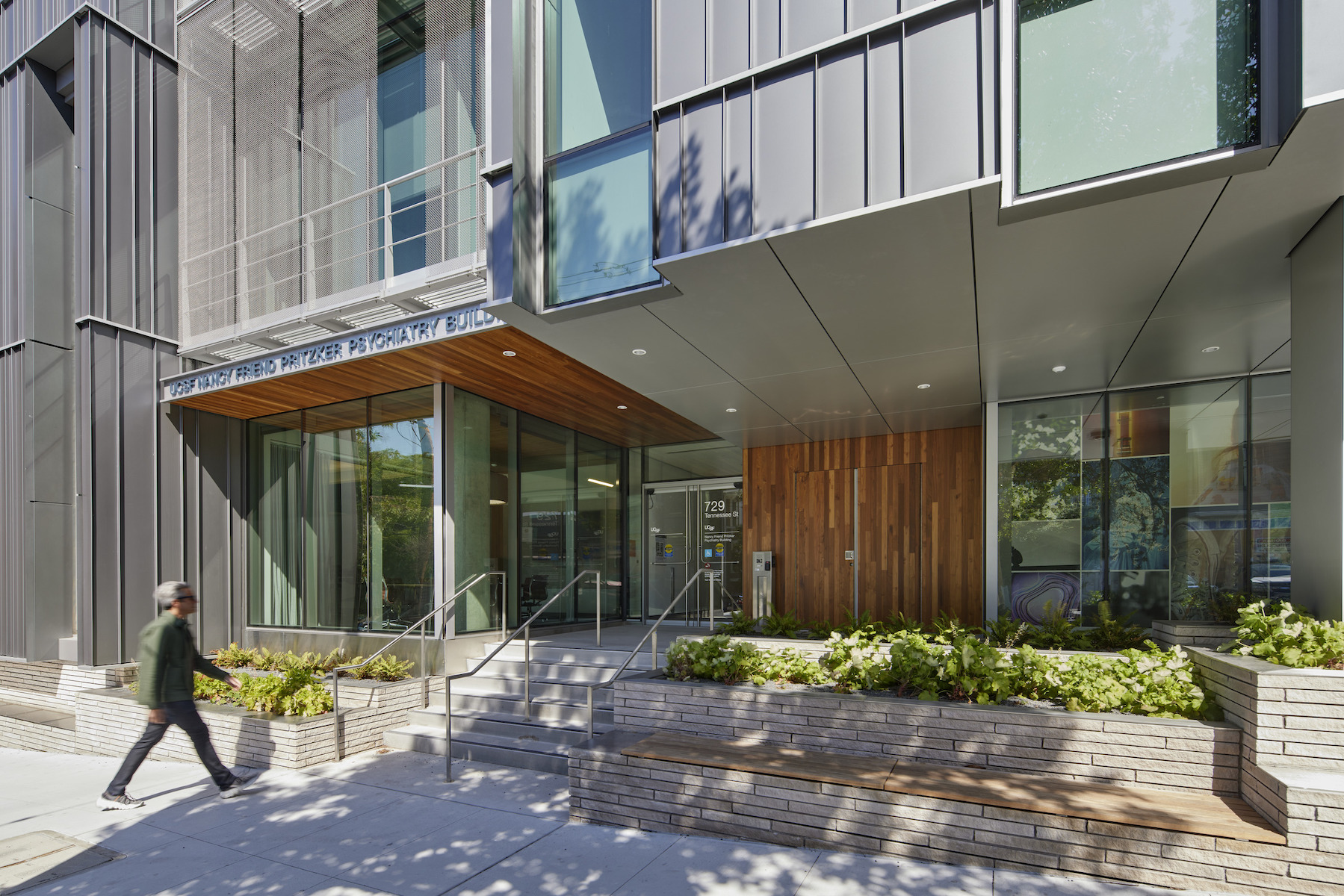
2. PROVIDE EXCLUSIVE AREAS FOR PRACTITIONERS
Empathy is what fosters human connection. A health practitioner’s empathy impacts the patient experience, which can positively affect their ability and willingness to comply with treatment. But a health worker’s job is not easy. In a 2022 advisory, Surgeon General Vivek Murthy noted that “8 of 10 health workers have experienced workplace violence, 76% of health workers reported exhaustion and burnout, and 66% of nurses have considered resigning.”
This level of stress can significantly reduce health workers’ capacity for empathy. To help restore empathy, practitioners need to practice self-care and self-empathy. Healthcare architects should carve out a separate space exclusively for physicians, nurses, and allied health professional, where they can socialize and eat a meal or snack – but most importantly it’s where they can go to wind down, collect themselves, and recover so that they can carry out their work with clarity of mind and provide the best possible care for their patients.
This could be an indoor space, an outdoor balcony, or a garden area; however, it must be a restricted badge-access area separate from patients, ideally with a visual disconnect from clinical spaces.
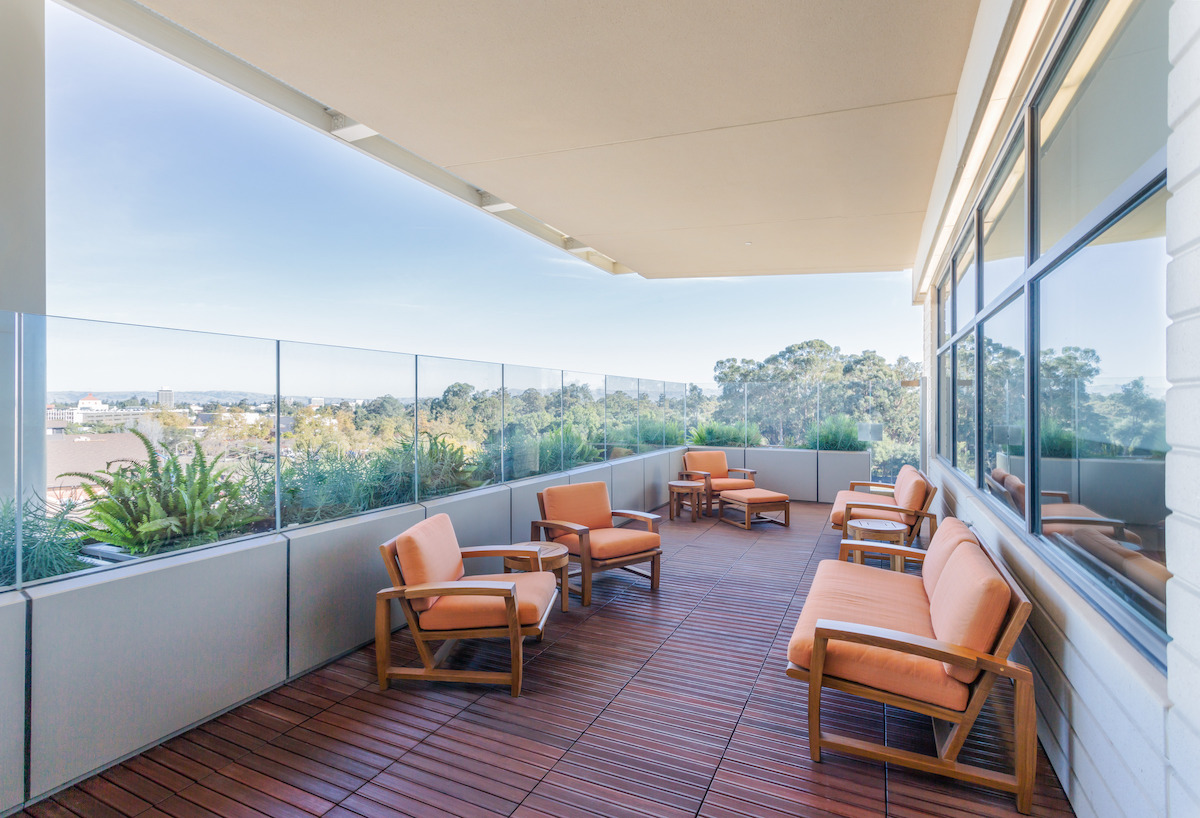
3. HARVEST THE BENEFITS OF NATURAL LIGHT
Daylit windows in the workplace have a dramatic impact on workers’ quality and duration of sleep, amount of physical activity, and overall quality of life. Exposure to sunlight can also help people with anxiety and depression, especially in combination with other treatments.
Daylight should be seen as a must-have for almost every room – including exam rooms. Grand windows and views could be an easy solution for your location, but not every office has access to desirable vistas and the need to balance transparency with privacy can prove limiting. Landscape features can be used to screen views into the building while providing biophilic benefits to those inside.
Clerestory windows, adjustable window coverings, and frosted glass can address the privacy issue. When windows are not an option, skylights and solartubes can bring natural light into the trickiest of spaces. If all else fails, daylight-mimicking luminaires on a 24/7 circadian schedule can be employed.
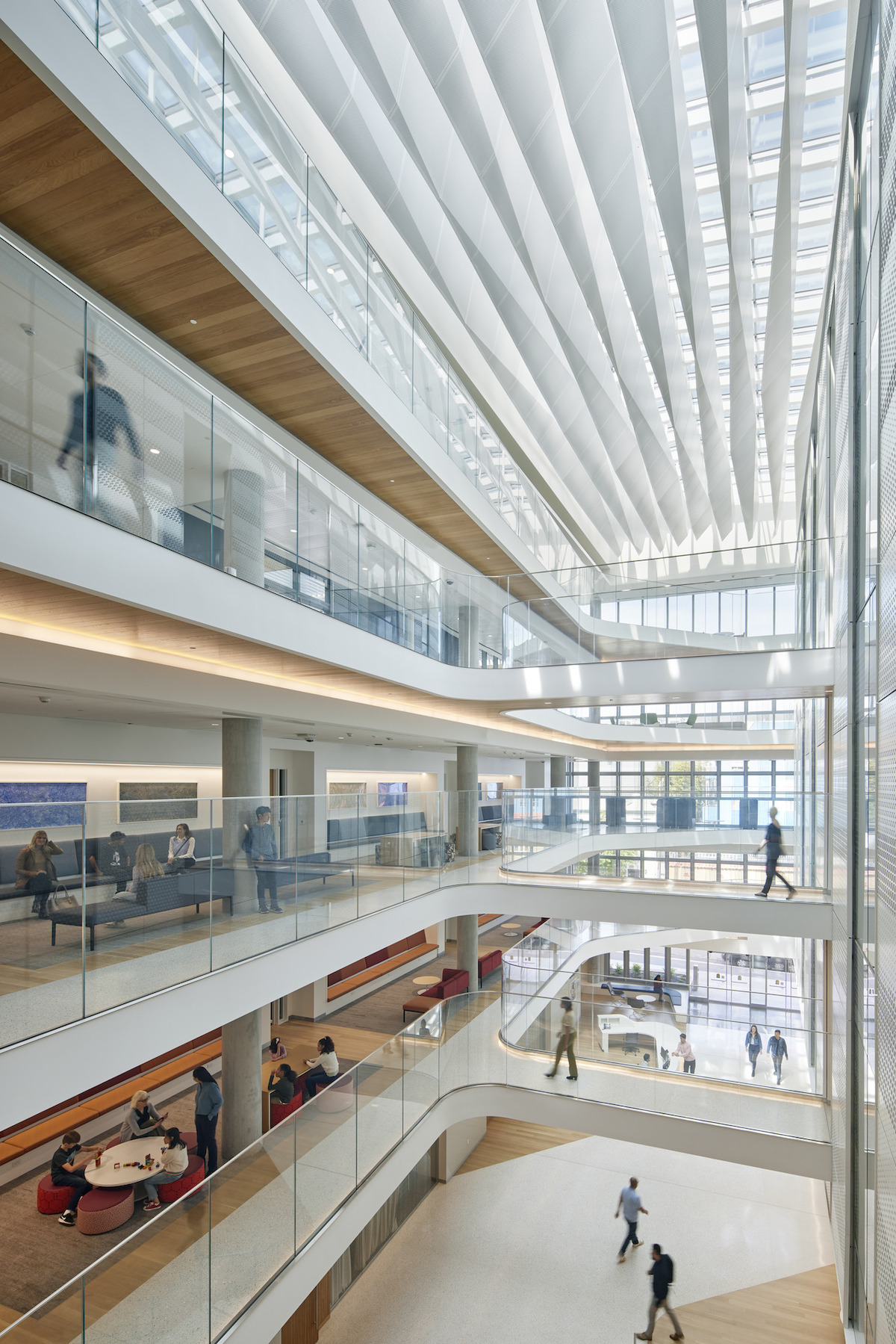
4. CREATE REFRESHING OUTDOOR SPACES
The only thing better than natural light indoors is being in the sunlight outdoors. Sunlight is a direct source of Vitamin D and when it hits our skin, it causes our bodies to release nitric oxide into the blood, which lowers blood pressure and helps people relax.
A garden area can serve as a place of respite for patients and staff to step away from the clinical environment, but it can also prove valuable to the waiting families of patients. Siblings and young children need to move around. This change of scenery would be greatly appreciated by the young ones, parents, and other visitors. Beyond these uses, a well-designed landscape can be therapeutic. This could be a passive landscape to stroll, get some fresh air, or meditate, or one specifically designed for outdoor therapy.

The spaces outside the office should be seen as an extension of the building and should be considered in early programming as vital and distinct spaces. If no outdoor space exists consider creating one using parking lots, balconies, decks, or even the rooftop. The natural elements in these spaces can help divide up the uses and create visual interest for those inside as well. Maximizing every opportunity in the landscape can dramatically increase your usable square footage or, at the very least, provide a well-loved amenity.
5. SELECT MATERIALS TO ENHANCE WELLNESS
The standards for cleanliness in healthcare settings are very high. Add to this an interest in meeting sustainability and wellness standards, and there are relatively few remaining options available for interior finishes.
This is especially difficult when the goal is to create a space that feels welcoming and relaxing. Here, a creative eye toward design is paramount. Look to hotels and restaurants for cues in creating a warm and welcoming space. While lush potted plants aren’t appropriate for a medical office, biophilia can bring in elements of nature through patterns and references. If outdoor views aren’t available, graphic images can connote or directly convey nature or natural settings.
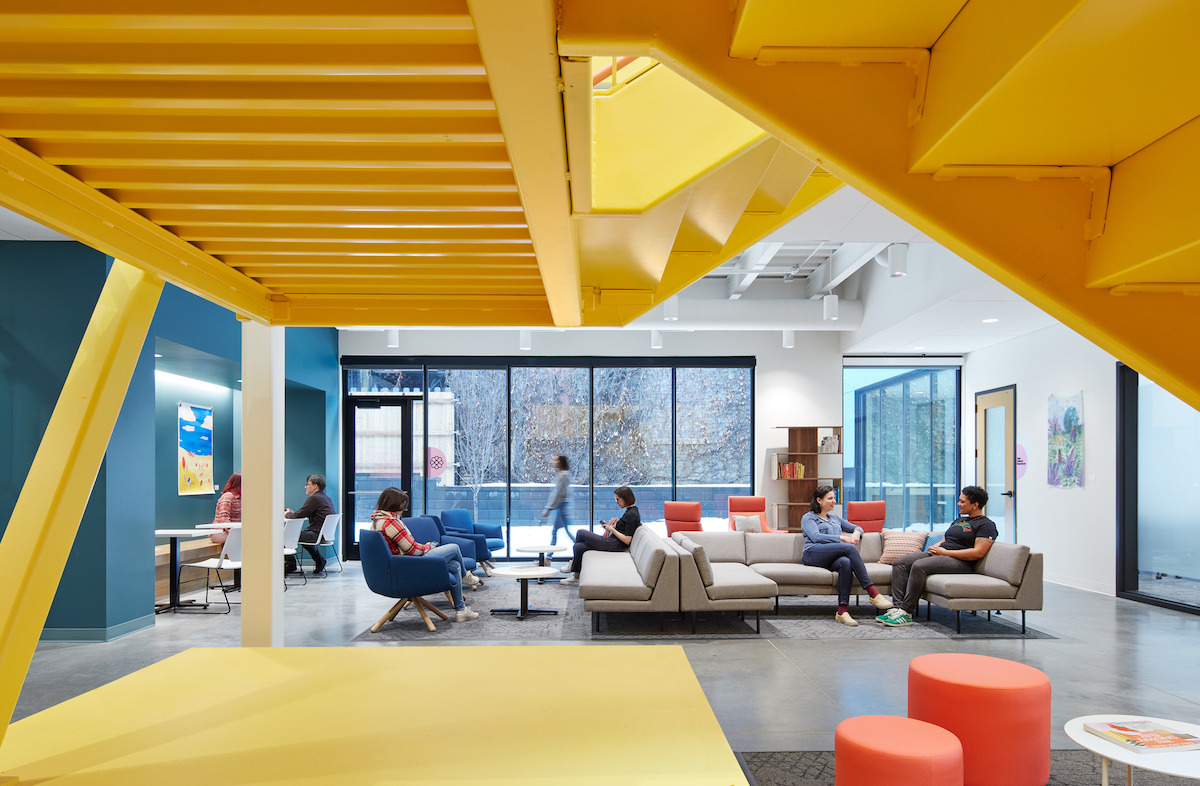
DESIGN WITH EMPATHY AT THE CORE
Prioritizing these five elements can take the physical form of medical offices beyond the sterile and functional requirements to create welcoming spaces that serve patients, their families, and the people who work there. These strategies for hospitality-like settings that build in more privacy, maximize natural daylight, and provide access to the outdoors help people relax, alleviate anxiety, and support better moods for everyone.
This is a respectful approach for patients, their family members, and staff, all of whom may be carrying a heavy mental load. Empathy is the core of any wellness program, so creating an area exclusively for doctors and nurses to help them regenerate their capacity to feel for their patients is essential.
Collectively these five approaches can create a space that fosters connection and supports well-being and wellness.
ABOUT THE AUTHOR
Megan Koehler, AIA, LEED AP BD+C, is an Associate Principal at Perkins&Will, leading the healthcare practice in the San Francisco studio. A registered architect in California and Illinois, she is a founding member of the Bay Area Living Building Challenge Collaborative.
Related Stories
Project + Process Innovation | Mar 22, 2023
Onsite prefabrication for healthcare construction: It's more than a process, it's a partnership
Prefabrication can help project teams navigate an uncertain market. GBBN's Mickey LeRoy, AIA, ACHA, LEED AP, explains the difference between onsite and offsite prefabrication methods for healthcare construction projects.
Modular Building | Mar 20, 2023
3 ways prefabrication doubles as a sustainability strategy
Corie Baker, AIA, shares three modular Gresham Smith projects that found sustainability benefits from the use of prefabrication.
Building Tech | Mar 14, 2023
Reaping the benefits of offsite construction, with ICC's Ryan Colker
Ryan Colker, VP of Innovation at the International Code Council, discusses how municipal regulations and inspections are keeping up with the expansion of off-site manufacturing for commercial construction. Colker speaks with BD+C's John Caulfield.
Healthcare Facilities | Mar 13, 2023
Next-gen behavioral health facilities use design innovation as part of the treatment
An exponential increase in mental illness incidences triggers new behavioral health facilities whose design is part of the treatment.
Healthcare Facilities | Mar 6, 2023
NBBJ kicks off new design podcast with discussion on behavioral health facilities
During the second week of November, the architecture firm NBBJ launched a podcast series called Uplift, that focuses on the transformative power of design. Its first 30-minute episode homed in on designing for behavioral healthcare facilities, a hot topic given the increasing number of new construction and renovation projects in this subsector.
Sustainability | Mar 2, 2023
The next steps for a sustainable, decarbonized future
For building owners and developers, the push to net zero energy and carbon neutrality is no longer an academic discussion.
University Buildings | Feb 23, 2023
Johns Hopkins shares design for new medical campus building named in honor of Henrietta Lacks
In November, Johns Hopkins University and Johns Hopkins Medicine shared the initial design plans for a campus building project named in honor of Henrietta Lacks, the Baltimore County woman whose cells have advanced medicine around the world. Diagnosed with cervical cancer, Lacks, an African-American mother of five, sought treatment at the Johns Hopkins Hospital in the early 1950s. Named HeLa cells, the cell line that began with Lacks has contributed to numerous medical breakthroughs.
Healthcare Facilities | Feb 21, 2023
Cleveland's Glick Center hospital anchors neighborhood revitalization
The newly opened MetroHealth Glick Center in Cleveland, a replacement acute care hospital for MetroHealth, is the centerpiece of a neighborhood revitalization. The eleven-story structure is located within a ‘hospital-in-a-park’ setting that will provide a bucolic space to the community where public green space is lacking. It will connect patients, visitors, and staff to the emotional and physical benefits of nature.
Multifamily Housing | Feb 16, 2023
Coastal Construction Group establishes an attainable multifamily housing division
Coastal Construction Group, one of the largest privately held construction companies in the Southeast, has announced a new division within their multifamily sector that will focus on the need for attainable housing in South Florida.
Intelligent Lighting | Feb 13, 2023
Exploring intelligent lighting usage in healthcare, commercial facilities
SSR's Todd Herrmann, PE, LEEP AP, explains intelligent lighting's potential use cases in healthcare facilities and more.


